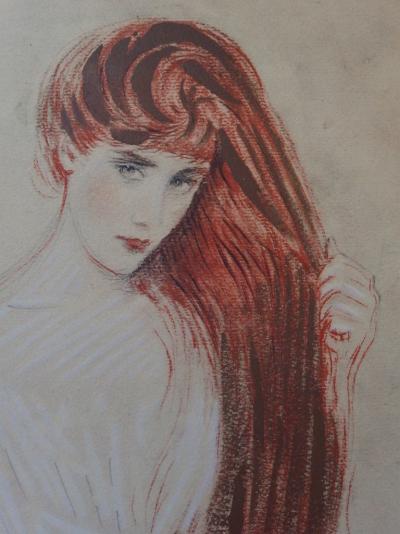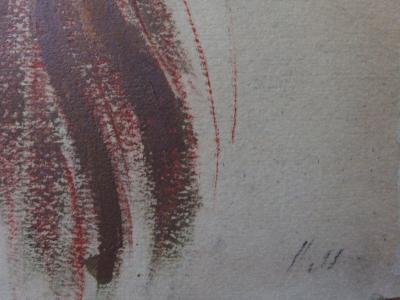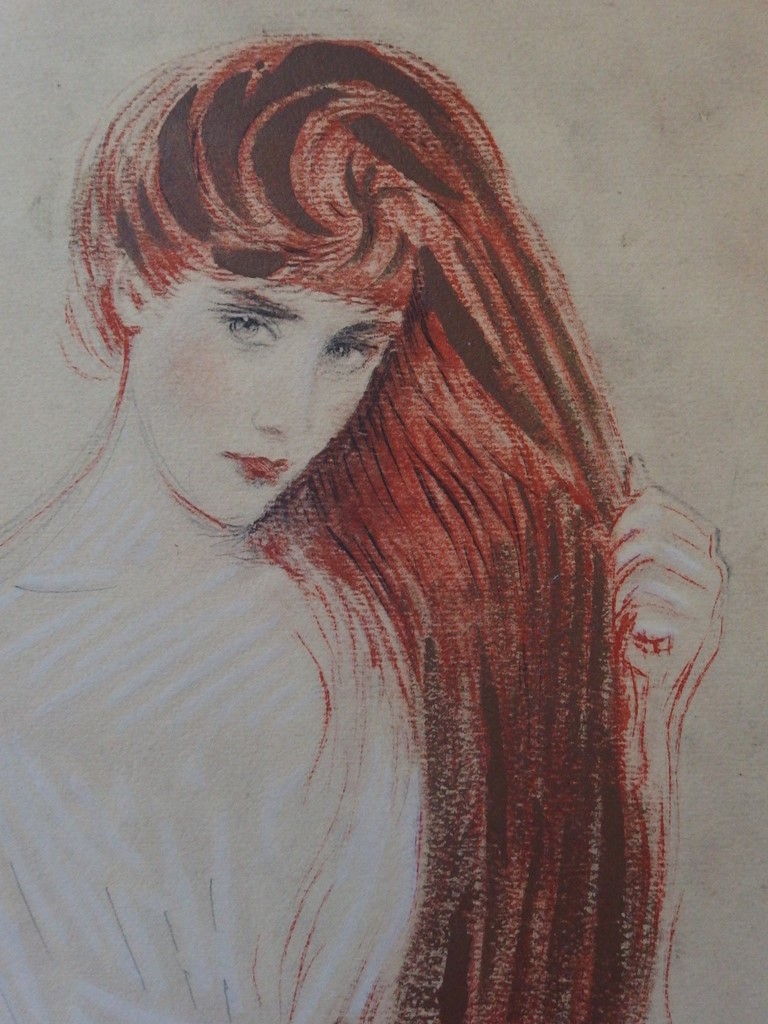-
-
- Alex Katz(2)
- Alexander Calder(19)
- André Derain(89)
- Andy Warhol(36)
- Antoni Tapiès(32)
- Arman(36)
- Aurélie Nemours(1)
- Bengt Lindström(7)
- Bernard Buffet(240)
- César(10)
- Charlotte Perriand(9)
- Claude Weisbuch(49)
- Corneille van Beverloo(14)
- Eduardo Chillida(7)
- François Morellet(1)
- Georges Braque(78)
- Gustav Klimt(6)
- Hans Bellmer(20)
- Hans Hartung lithograph(29)
- Henri Matisse(200)
- Hervé Télémaque(6)
- Jacques Villeglé(4)
- Jean Cocteau(197)
- Jean Hélion(10)
- Jean Miotte(1)
- Jean Picart Le Doux(6)
- Joan Miro(121)
- Julio le Parc(1)
- Karel Appel(1)
- Keith Haring(8)
- Ladislas Kijno(2)
- Léonard Tsugouharu Foujita(54)
- Leonor Fini(103)
- Louis Toffoli(6)
- Marc Chagall(470)
- Marie Laurencin(49)
- Maurice de Vlaminck(82)
- Maurice Utrillo(20)
- Max Ernst(39)
- Mimmo Rotella(5)
- Niki de Saint Phalle(4)
- Pablo Picasso(402)
- Peter Klasen(7)
- Philippe Pasqua(4)
- Pierre Alechinsky(51)
- Pierre Soulages lithographs(50)
- Pierre Tal-Coat(7)
- Pierre-Yves Trémois(36)
- Raoul Dufy(53)
- Robert Combas(5)
- Salvador Dali(459)
- Théo Tobiasse(7)
- Tony Soulié(10)
- Valério Adami(31)
- Victor Vasarely(17)
- Yves Brayer(43)
- Zao Wou-Ki(21)
Top artists -
-
-
-
- Alex Katz(2)
- Alexander Calder(19)
- André Derain(89)
- Andy Warhol(36)
- Antoni Tapiès(32)
- Arman(36)
- Aurélie Nemours(1)
- Bengt Lindström(7)
- Bernard Buffet(240)
- César(10)
- Charlotte Perriand(9)
- Claude Weisbuch(49)
- Corneille van Beverloo(14)
- Eduardo Chillida(7)
- François Morellet(1)
- Georges Braque(78)
- Gustav Klimt(6)
- Hans Bellmer(20)
- Hans Hartung lithograph(29)
- Henri Matisse(200)
- Hervé Télémaque(6)
- Jacques Villeglé(4)
- Jean Cocteau(197)
- Jean Hélion(10)
- Jean Miotte(1)
- Jean Picart Le Doux(6)
- Joan Miro(121)
- Julio le Parc(1)
- Karel Appel(1)
- Keith Haring(8)
- Ladislas Kijno(2)
- Léonard Tsugouharu Foujita(54)
- Leonor Fini(103)
- Louis Toffoli(6)
- Marc Chagall(470)
- Marie Laurencin(49)
- Maurice de Vlaminck(82)
- Maurice Utrillo(20)
- Max Ernst(39)
- Mimmo Rotella(5)
- Niki de Saint Phalle(4)
- Pablo Picasso(402)
- Peter Klasen(7)
- Philippe Pasqua(4)
- Pierre Alechinsky(51)
- Pierre Soulages lithographs(50)
- Pierre Tal-Coat(7)
- Pierre-Yves Trémois(36)
- Raoul Dufy(53)
- Robert Combas(5)
- Salvador Dali(459)
- Théo Tobiasse(7)
- Tony Soulié(10)
- Valério Adami(31)
- Victor Vasarely(17)
- Yves Brayer(43)
- Zao Wou-Ki(21)
Top artists -
-
Paul César HELLEU - Femme rousse, Lithographie
Femme rousse
Lithographie rehaussée au pochoir
Signée dans la planche
Sur vélin 26 x 20 cm
Très bon état, petit défaut en bord de feuillet
 Paul-César Helleu :
(1859-1927) is a french painter and engraver, who was a student of Jean-Léon Gérôme. He was a close friend of James Abbott McNeill Whistler, John Singer Sargent, and Claude Monet. At the end of the 1880's, he steps in the parisian society, and becomes a trendy portraitist. The "Helleu style" is characterized by elegance et refinement, feminine grace, and was very successful in Paris, London, as well as in New York, where he goes starting from 1902. He was commissioned to decorate the ceiling of Grand Central Terminal hall, with the theme of Zodiac signs: a starry vault, crossed by a zodiac with gold signs, and a silver milky way. His works can be found at the Musée des Beaux Arts de Nantes (France), Nykytaiteen museo Kiasma (Finland),
Indianapolis Museum of Art (The USA), Musée d'Art moderne et contemporain de Strasbourg (France), Fondation Bemberg (France), Wichita Art Museum (The USA), Tate Collection (Royaume Uni), Auckland Art Gallery (Australia), Musée Bonnat (France), Musée des Beaux Arts, Rouen (France)...
Paul-César Helleu :
(1859-1927) is a french painter and engraver, who was a student of Jean-Léon Gérôme. He was a close friend of James Abbott McNeill Whistler, John Singer Sargent, and Claude Monet. At the end of the 1880's, he steps in the parisian society, and becomes a trendy portraitist. The "Helleu style" is characterized by elegance et refinement, feminine grace, and was very successful in Paris, London, as well as in New York, where he goes starting from 1902. He was commissioned to decorate the ceiling of Grand Central Terminal hall, with the theme of Zodiac signs: a starry vault, crossed by a zodiac with gold signs, and a silver milky way. His works can be found at the Musée des Beaux Arts de Nantes (France), Nykytaiteen museo Kiasma (Finland),
Indianapolis Museum of Art (The USA), Musée d'Art moderne et contemporain de Strasbourg (France), Fondation Bemberg (France), Wichita Art Museum (The USA), Tate Collection (Royaume Uni), Auckland Art Gallery (Australia), Musée Bonnat (France), Musée des Beaux Arts, Rouen (France)...
 César :
(1921-1998) known as César, is a french sculptor, born in 1921 in Marseille and died in 1998 in Paris. He is the creator of the eponym bronze trophy (created in 1976) celebrating the French cinema.
In 1935 he studied at The School of Fine Arts of Marseille with Raymond Normand. Then, in 1943, at the National Superior School of Fine Arts of Paris with Michel Guino, Albert Féraud, Daniel David and Philippe Hiquily, in Marcel Gimond's workshop. From 1947, he worked with plaster and iron. In 1952, in Trans-en-Provence, he first attempted welding and making sculptures in in scrap iron, using recovered materials. In 1954, he exhibited in Lucien Durand's gallery and obtained the « collabo » Prize. In 1956, he took part in the biennials of Venice, São Paulo and to The Documenta II in 1959. In 1961, he got closer to Marino di Teana, and joined The "New Realists" group (with Mimmo Rotella, Niki de Saint Phalle, Gérard Deschamps...).
From 1960, César centered his work on « compression dirigée » (directed compression), which became his trademark : helped by an hydraulic press, he compressed diverse objets (cars, fabrics, papers, and even gold jewellery...).
This appropriation act was a challenge to the consumer society and it kept him close to the New realist artists circle, of which he became member with his friend Arman. Reversing the spirit of compressions, César created his « expansions » (The great orange expansion, 1967) and began to work with crystal in fusion.
He reached an international recognition starting from 1970. His participation to an exhibition dedicated to the hand, from Rodin to Picasso and the discovery of the pantograph enlarging process lead him to the realization of The "Empreintes" (prints) (finger, breast, fist...). From 1949 to 1966 he created more than 300 constructions with the arc welding technic (Centaur, Flying French man, 1983...). The artist multiplied exhibitions : Centre Pompidou, Tate Gallery, MoMA… Retrospective at Jeu de Paume in Paris in 1997, in Malmö, Milan, São Paulo, Mexico.
César ended his career with a series of portraits and self-portraits.
César :
(1921-1998) known as César, is a french sculptor, born in 1921 in Marseille and died in 1998 in Paris. He is the creator of the eponym bronze trophy (created in 1976) celebrating the French cinema.
In 1935 he studied at The School of Fine Arts of Marseille with Raymond Normand. Then, in 1943, at the National Superior School of Fine Arts of Paris with Michel Guino, Albert Féraud, Daniel David and Philippe Hiquily, in Marcel Gimond's workshop. From 1947, he worked with plaster and iron. In 1952, in Trans-en-Provence, he first attempted welding and making sculptures in in scrap iron, using recovered materials. In 1954, he exhibited in Lucien Durand's gallery and obtained the « collabo » Prize. In 1956, he took part in the biennials of Venice, São Paulo and to The Documenta II in 1959. In 1961, he got closer to Marino di Teana, and joined The "New Realists" group (with Mimmo Rotella, Niki de Saint Phalle, Gérard Deschamps...).
From 1960, César centered his work on « compression dirigée » (directed compression), which became his trademark : helped by an hydraulic press, he compressed diverse objets (cars, fabrics, papers, and even gold jewellery...).
This appropriation act was a challenge to the consumer society and it kept him close to the New realist artists circle, of which he became member with his friend Arman. Reversing the spirit of compressions, César created his « expansions » (The great orange expansion, 1967) and began to work with crystal in fusion.
He reached an international recognition starting from 1970. His participation to an exhibition dedicated to the hand, from Rodin to Picasso and the discovery of the pantograph enlarging process lead him to the realization of The "Empreintes" (prints) (finger, breast, fist...). From 1949 to 1966 he created more than 300 constructions with the arc welding technic (Centaur, Flying French man, 1983...). The artist multiplied exhibitions : Centre Pompidou, Tate Gallery, MoMA… Retrospective at Jeu de Paume in Paris in 1997, in Malmö, Milan, São Paulo, Mexico.
César ended his career with a series of portraits and self-portraits.
-
Create an alert
Create an alert
Please subscribe to our free alert service to be notified when a similar item is available on the website.
This item is not available. Please click on « View the catalog » to see similar items available.









